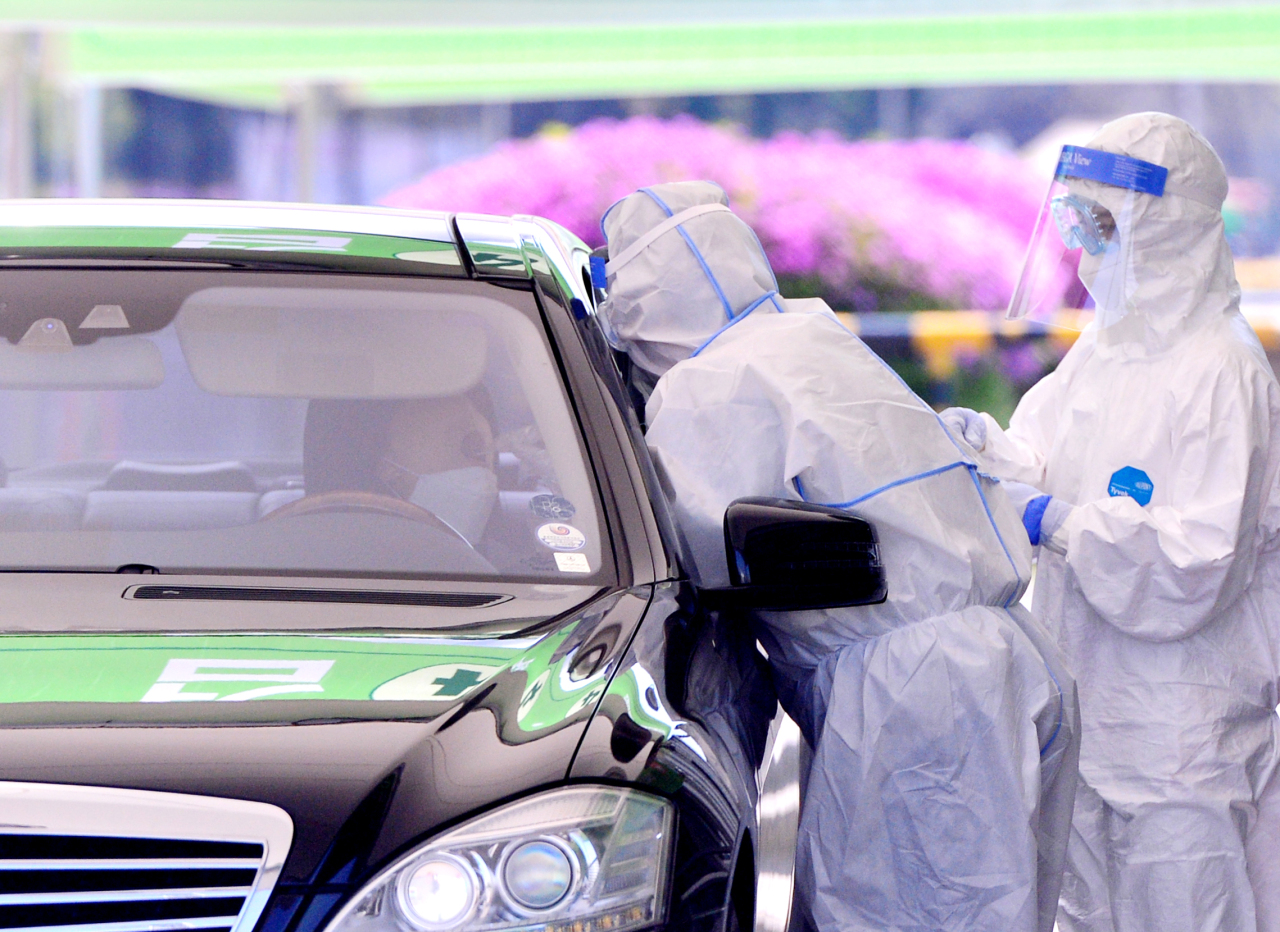We don’t know how many have actually been infected: KCDC chief
By Kim ArinPublished : April 26, 2020 - 11:48

Public health officials are grappling to figure out how many in South Korea have really been infected with the novel coronavirus.
Korea Centers for Disease Control and Prevention Director Jung Eun-kyeong said in a Sunday press briefing that the agency currently has no estimates for the actual extent of infections in the country.
“Korea, with a robust testing system, has managed to screen a lot of mildly symptomatic or even asymptomatic cases,” she said.
“But we have yet to conduct the kind of investigations -- such as serosurveys -- that would give us a more concrete understanding of how common the COVID-19 infection is here.”
Jung said given that patients with mild or no symptoms are capable of passing on the disease, there were potential risks these unwitting carriers may pose that have not been assessed.
The disease control agency’s Vice Director Kwon Jun-wook said Saturday the COVID-19 cases are highly likely to be undercounted.
Kwon said that in Korea, like other countries, the actual number of COVID-19 patients is believed to exceed the number of known patients.
He added that Prime Minister Chung Sye-kyun has ordered in a Saturday meeting an antibody survey to grasp how widespread the infection was in communities.
But whether the presence of antibodies equaled immunity was a separate discussion, he said.
“There is currently no evidence that people who have recovered from COVID-19 and have antibodies are protected from a second infection,” said the World Health Organization in a statement dated Friday.
At least 250 patients in Korea have tested positive again after being declared recovered. Two consecutive negatives in tests conducted at a 24-hour interval qualifies as recovery.
In Sejong, about 20 percent of all recovered patients showed positive results in tests conducted with respiratory samples. All of the city’s suspected “relapsed” patients demonstrated no symptoms.
Despite the high proportion of second positive cases, no nationwide test for the 8,717 recovered patients will be conducted, Jung said.
Instead, recovered patients are advised to limit contact with others, wear face masks and report to authorities when symptoms emerge.
Social distancing is still valid, Jung stressed, making a special plea to younger people.
Busan officials said Saturday that a 19-year-old from Daegu had visited a nightclub and a bar in the city the weekend before he was diagnosed on Thursday. Nearly 500 people are believed to have crossed paths with the teenage patient shortly before he developed symptoms.
Since the orders for certain businesses to close were lifted Monday as the first step of an economic reopening in stages, the public’s commitment to distancing has visibly dwindled. Health officials caution against this trend.
“Making nonessential visits to areas with high crowd density is still discouraged until May 5,” Jung said.
Depending on how the virus situation progresses, Korea may decide to shift to a less stringent strategy in the first week of May.
But as the country prepares to relax social distancing and move on to the next phase of the response, health officials also warn of a second wave of the disease coming in fall and urge the need for constant heed from public.
Korea’s case count appears to be stabilizing, with 10 new virus patients reported on Sunday. The daily count of new cases has been hovering around 10 for the past week. The total stands at 10,728.
Four of the newly confirmed patients were detected at the border, bringing the tally of imported cases to 1,037.
Two more patients have died, raising the death toll to 242. The fatality rate is 2.2 percent -- much higher for seniors aged 80 and older at over 20 percent.
By Kim Arin (arin@heraldcorp.com)



![[AtoZ into Korean mind] Humor in Korea: Navigating the line between what's funny and not](http://res.heraldm.com/phpwas/restmb_idxmake.php?idx=644&simg=/content/image/2024/04/22/20240422050642_0.jpg&u=)
![[Exclusive] Korean military set to ban iPhones over 'security' concerns](http://res.heraldm.com/phpwas/restmb_idxmake.php?idx=644&simg=/content/image/2024/04/23/20240423050599_0.jpg&u=20240423183955)



![[Graphic News] 77% of young Koreans still financially dependent](http://res.heraldm.com/phpwas/restmb_idxmake.php?idx=644&simg=/content/image/2024/04/22/20240422050762_0.gif&u=)
![[Herald Interview] Why Toss invited hackers to penetrate its system](http://res.heraldm.com/phpwas/restmb_idxmake.php?idx=644&simg=/content/image/2024/04/22/20240422050569_0.jpg&u=20240422150649)






![[Exclusive] Korean military to ban iPhones over security issues](http://res.heraldm.com/phpwas/restmb_idxmake.php?idx=652&simg=/content/image/2024/04/23/20240423050599_0.jpg&u=20240423183955)



![[Today’s K-pop] Ateez confirms US tour details](http://res.heraldm.com/phpwas/restmb_idxmake.php?idx=642&simg=/content/image/2024/04/23/20240423050700_0.jpg&u=)